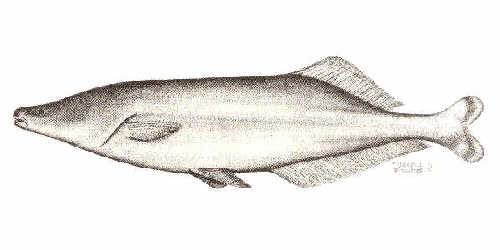 These are much
more difficult to find than the Bottlenose, as they do not leave any sign
of where they are.
These are much
more difficult to find than the Bottlenose, as they do not leave any sign
of where they are.
You need to find "Holes" in the river bed or lake, where food may tend to collect, and generally the water is darker in terms of light penetration. Often these "holes" are near floating weed edges so the fish can hide under them during the day.
When the water is dirty, the holes need not be too deep, sometimes only a few feet, and preferably near the current where the food will drop into the hole. In clearer water the holes need to be deeper or near big weed patches for them to hide under and can be 8 to 20 feet.
They eat all sorts of things from small Plaaties, fish fillet, worms to Kapenta.
They do have teeth (almost like a humans), so if you find that you are hooking into biggish semi lethargic fish, and you keep losing your hook, try putting on a soft trace of a few inches and see what happens. (You never know it might be an eel, especially in very deep holes in the Zambezi River)
Their bite is normally fairly distinctive with two "gentle pulls"
first and then they go all the way.
As far as terminal tackle rigs are concerned, it is better to use
a "sliding sinker" type rig with a largish weight if the current
is quite strong. The bait will "swim around" a bit if there is sufficient
current.
An ordinary ledger will work well in still water conditions.
Most fish caught are fairly large, (3kg upwards) and give a fairly
good account of themselves considering the size of their tail. Getting
them up is the problem as they tend to sulk down there like bottlenose.
They seem to like the rivers where there are deep pools caused by the river flow, and often these are around rocks and near the edges where there are overhanging trees. Quite often when fishing for these one will find that the squeakers are around then they suddenly disappear and either the Tiger will come on or the Jack will be back. When the squeakers come back the others have moved on to return later.
They do come into the shallows at night, and this is often a good time to try and catch them.
They do give off a mild shock when lifted by both the head and the tail together.